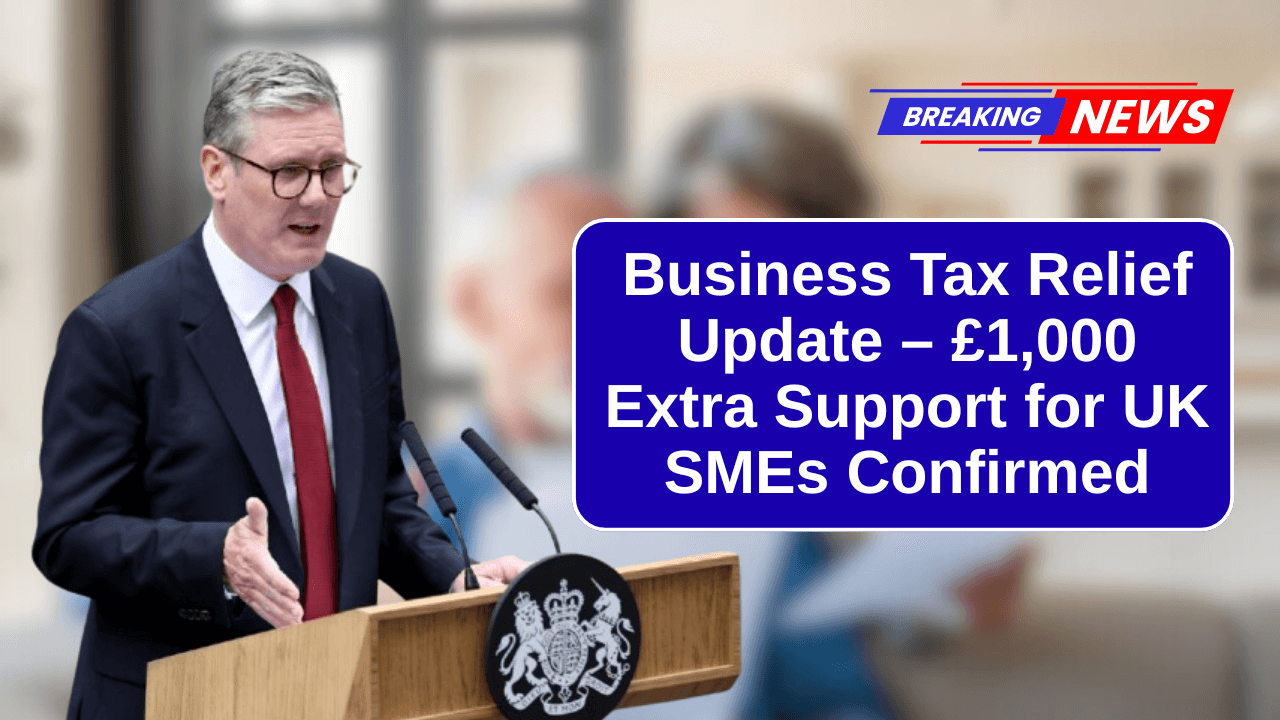Small and medium-sized enterprises (SMEs) are the backbone of the UK economy, employing millions and driving innovation across industries. In 2025, the government has confirmed a new round of tax relief support worth up to £1,000, aimed at helping businesses weather ongoing financial pressures.
This update comes at a crucial time, as many SMEs continue to face challenges from inflation, rising interest rates, and increased operating costs. The extra relief will provide much-needed breathing space for owners and entrepreneurs trying to stay competitive.
In this article, we’ll explore exactly what this new support means, who qualifies, how to claim, and the wider impact on the business landscape in the UK.
What Is the £1,000 Business Tax Relief?
The new tax relief is part of the government’s wider plan to reduce the financial burden on SMEs. For eligible businesses, it means up to £1,000 reduction in tax liabilities for the financial year.
Unlike loans or grants that require repayment, this relief is a direct tax deduction, meaning firms will see the benefit when they file returns. For small enterprises, this could be the difference between breaking even and going into the red.
Why Was This Relief Introduced?
The UK business environment has been under pressure for several years. Higher costs of energy, supply chain disruptions, and increased wages have left SMEs struggling. According to business associations, many small firms are reporting reduced profit margins, delayed growth plans, and in some cases, closures.
The government recognised that without immediate support, thousands of SMEs risked shutting their doors. The £1,000 relief has been designed to provide quick, accessible assistance to keep small firms operating.
Who Qualifies for the £1,000 SME Support?
Not all businesses will automatically qualify. The government has set specific criteria:
- The business must be classified as an SME under UK law.
- Annual turnover must be below a certain threshold (expected to be £25 million).
- The business must be actively trading and registered with HMRC.
- Companies in sectors receiving other targeted relief may see adjustments.
Self-employed individuals running micro-businesses may also be eligible, depending on their tax classification.
How Can Businesses Claim the Relief?
The relief will be applied through corporation tax or income tax returns, depending on the business structure.
- Limited companies: Deduction applies to corporation tax bills.
- Sole traders and partnerships: Deduction applies through self-assessment.
- Employers: Relief may also reduce National Insurance contributions indirectly.
Firms will need to ensure records are up to date, with HMRC systems expected to automatically apply the discount once eligibility is confirmed.
When Will the Relief Take Effect?
The relief will apply to the 2025/26 tax year, starting in April 2025. Businesses filing returns after that date will see the deduction automatically included.
This timing aligns with other financial reforms, including minimum wage increases and adjustments to corporation tax bands.
Wider Impact on UK SMEs
The relief may not solve every financial challenge, but for many businesses, it will make a noticeable difference.
- Cash flow improvement: Firms will have more liquidity to invest in operations.
- Stability for growth: Owners may delay difficult decisions like redundancies or cutbacks.
- Confidence boost: Extra support signals government commitment to SMEs.
Industry experts believe this relief, when combined with other initiatives, could help thousands of firms remain competitive in a challenging market.
How Does It Compare to Previous Support?
In the past, the government has introduced schemes such as:
- Business rates holidays.
- Energy bill discounts.
- Bounce Back Loans during the pandemic.
The difference here is permanence. Instead of a temporary measure, this tax relief is expected to be part of a longer-term business support strategy.
Key Sectors Likely to Benefit Most
Certain industries have been particularly hard-hit in recent years. These include:
- Hospitality and retail – facing rising wage and energy costs.
- Construction – impacted by material price hikes.
- Manufacturing – dealing with supply chain pressures.
- Technology start-ups – needing consistent investment support.
For these businesses, £1,000 relief may provide a vital buffer against ongoing pressures.
Potential Criticism and Limitations
While welcomed, the scheme is not without its critics. Some business leaders argue that £1,000 is not enough to make a meaningful difference given current inflation rates. Others point out that larger SMEs with higher costs may feel the benefit less.
However, the government insists this is only one part of a wider package of measures. More targeted funding and sector-specific aid are expected to follow.
Preparing Your Business to Claim
SME owners should take proactive steps to ensure they benefit:
- Keep records updated with HMRC.
- File returns promptly and accurately.
- Seek professional advice if unsure about eligibility.
- Use the relief strategically, reinvesting in areas that drive growth.
The Future of SME Support in the UK
This relief may be the beginning of broader reform. With the government under pressure to boost economic growth, small businesses will likely remain a central focus. Further tax adjustments, grants, and credit schemes may follow in the coming years.
Conclusion
The £1,000 business tax relief for SMEs confirmed for 2025 is a welcome move for UK entrepreneurs. While it won’t erase every challenge, it provides valuable breathing space at a time of rising costs and financial uncertainty.
For many small firms, this could be the lifeline needed to keep doors open, protect jobs, and invest in future growth. Owners should stay informed, prepare their records, and make the most of this opportunity.
